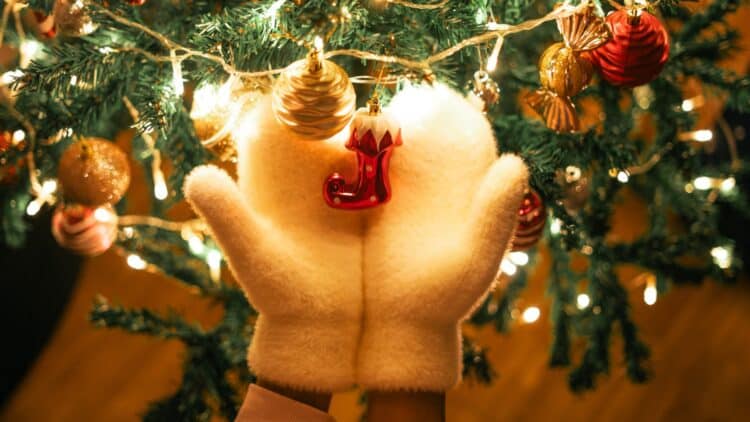The Christmas holidays have a color palette engraved in your mind: the deep green of freshly cut pine trees, the vibrant red of mistletoe fences, and Santa Claus’ suit. This iconic combination has been with us for generations. However, in recent years, and especially for the 2025 holiday season, decoration experts are favoring a radical change in this color palette. There’s nothing wrong with the combination of red and green, but if you feel like innovating this winter, here are some alternative trends for these colder months.
Minimalism and Soft Lighting
Interior designers are moving away from intense colors and toward palettes that create serene and sophisticated atmospheres. This is where neutral tones take center stage: colors such as off-white, beige, cream, light gray, and sage. Although it may seem a little bland, it is a serene decor for people who feel overstimulated throughout the day. For many, their home is their refuge where they can protect themselves from all external stimuli.
The best thing about this decor is that it can be integrated with any type of furniture style you already have at home. You’ll find it on Instagram or Pinterest under the names “Nordic Minimalism” or “Cozy Cottagecore.”
Soft metals
From the traditional garish gold or shiny silver that is so overwhelming you need sunglasses to look at the ornaments, this year’s metallic trend is much more subtle. Look for accents that complement the decor, not overwhelm it. The key colors here are champagne gold, copper, rose gold, and matte silver.
It’s all about using minimal metallic accents to add a touch of glamour to your home without going overboard.
Pastels and Jewel Tones
If, on the other hand, you want to move away from classic red and green but still want to do something alternative, you can opt for a different aesthetic with a pastel palette. Colors such as pale pink, sky blue, and mint green remind us of Santa Claus’s little house in the snow. These colors create a delicate, modern, and almost fairy-tale look.
If, on the other hand, you want to create a dramatic and opulent touch, you can go for jewel tones: sapphire, deep emerald green, and plum, reminiscent of amethyst. These rich tones are ideal when combined with warm metallics such as gold and brass. If you like historical gothic aesthetics or simply loved Nightmare Before Christmas, this aesthetic has a touch of Halloween… only extended over a few months.
Traditions That Were Never Red or Green
Although we are talking about American aesthetics, other parts of the world have had a different approach to Christmas decorations. For example, the Nordic concept of Hygge (meaning “well-being and warmth”) focuses on creating a cozy refuge. In latitudes where winter is completely dark, the protagonist is not color, but light. This is why environments with this aesthetic focus on warm white lights, candles, and lanterns that create a soft but luminous atmosphere.
Applied to Christmas, decorations and ornaments are usually natural, such as stars, angels, and figures made of straw or undyed natural wood. As we have already mentioned, the color palette is quite sober in this case: beige, natural brown, white, and gray. Another well-known decorative element is the Nisse or Tomte (folk gnomes or elves), typically made of wool or felt in shades of gray, white, and cream.
Another dreamlike Christmas decoration is what you can buy at German Christmas markets (“Weihnachtsmärkte”). These decorative elements do not focus on Santa Claus Christmas, but on German crafts and folklore. That is why you will find many nutcrackers, sailing boats, and Christmas scenes such as animals or children skating on a frozen lake.
One of the most iconic elements of German decoration is the Christmas pyramid (Weihnachtspyramide). These are multi-story structures with carved figures that rotate. Despite having touches of red and green, they are made of natural wood and are a work of artisanal engineering.

